What is a normal ast and alt level. Understanding AST and ALT Levels: Normal Ranges, Causes of Abnormalities, and Clinical Significance
What are normal AST and ALT levels in blood tests. How do high or low AST and ALT levels indicate liver health. What causes elevated AST and ALT levels. When should you be concerned about abnormal liver enzyme results.
What Are AST and ALT and Why Are They Important?
Aspartate aminotransferase (AST) and alanine aminotransferase (ALT) are enzymes found primarily in the liver. These enzymes play crucial roles in amino acid metabolism and are often measured together as part of a liver function test panel. When liver cells are damaged or die, AST and ALT are released into the bloodstream, causing their levels to rise. This makes them valuable biomarkers for assessing liver health and function.
AST is found in various tissues, including the liver, heart, muscles, and kidneys. In contrast, ALT is found predominantly in the liver, making it a more specific indicator of liver damage. Monitoring AST and ALT levels can help healthcare providers detect, diagnose, and monitor liver diseases and other conditions affecting liver function.
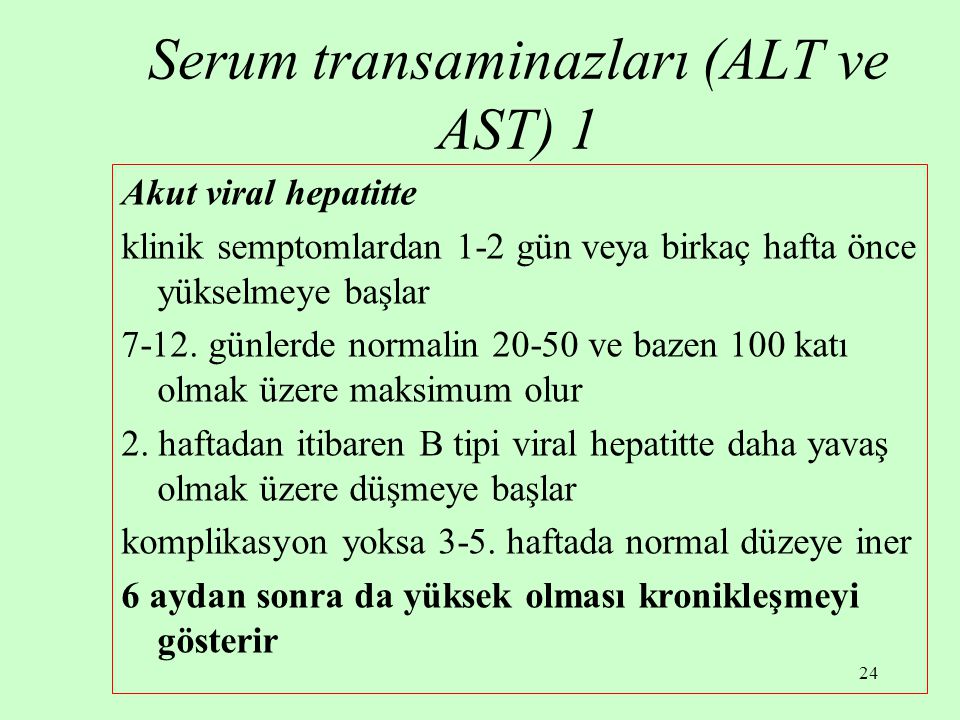
Normal AST and ALT Ranges: What Do They Mean?
The normal range for AST and ALT can vary slightly between laboratories and depending on the specific testing methods used. However, generally accepted normal ranges are:
- AST: 8 to 33 U/L (units per liter)
- ALT: 7 to 55 U/L
It’s important to note that these ranges may differ based on factors such as age, sex, and overall health status. For instance, men typically have higher ALT levels than women, and the upper limit of normal may be adjusted for older adults.
Are slightly elevated AST or ALT levels always a cause for concern? Not necessarily. Minor elevations can occur due to temporary factors like strenuous exercise or certain medications. However, persistent elevations or levels significantly above the normal range warrant further investigation.
Causes of Elevated AST and ALT Levels
Elevated AST and ALT levels can be indicative of various liver conditions and other health issues. Some common causes include:
- Hepatitis (viral, alcoholic, or autoimmune)
- Fatty liver disease (alcoholic and non-alcoholic)
- Cirrhosis
- Drug-induced liver injury
- Liver cancer
- Heart attack (primarily affecting AST)
- Muscle disorders or injuries (primarily affecting AST)
- Hemochromatosis (iron overload)
- Mononucleosis
- Pancreatitis
In some cases, elevated AST and ALT levels may be temporary and resolve on their own. However, persistent elevations often require further diagnostic tests to determine the underlying cause and appropriate treatment.

The AST/ALT Ratio: A Valuable Diagnostic Tool
The ratio of AST to ALT can provide additional insights into liver health and the potential causes of liver damage. This ratio is particularly useful in distinguishing between different types of liver diseases.
What does the AST/ALT ratio tell us about liver health? Here’s a breakdown:
- AST/ALT ratio < 1: This is typically seen in viral hepatitis and non-alcoholic fatty liver disease.
- AST/ALT ratio > 2: This is often associated with alcoholic liver disease and may indicate more severe liver damage.
- AST/ALT ratio between 1 and 2: This can be seen in various liver conditions and may require further investigation.
It’s important to note that the AST/ALT ratio should always be interpreted in conjunction with other clinical findings and test results for accurate diagnosis and treatment planning.
Low AST and ALT Levels: Should You Be Concerned?
While elevated AST and ALT levels often receive more attention, low levels of these enzymes can also be significant in some cases. Low AST and ALT levels are less common and generally not as concerning as high levels, but they may indicate certain health conditions.
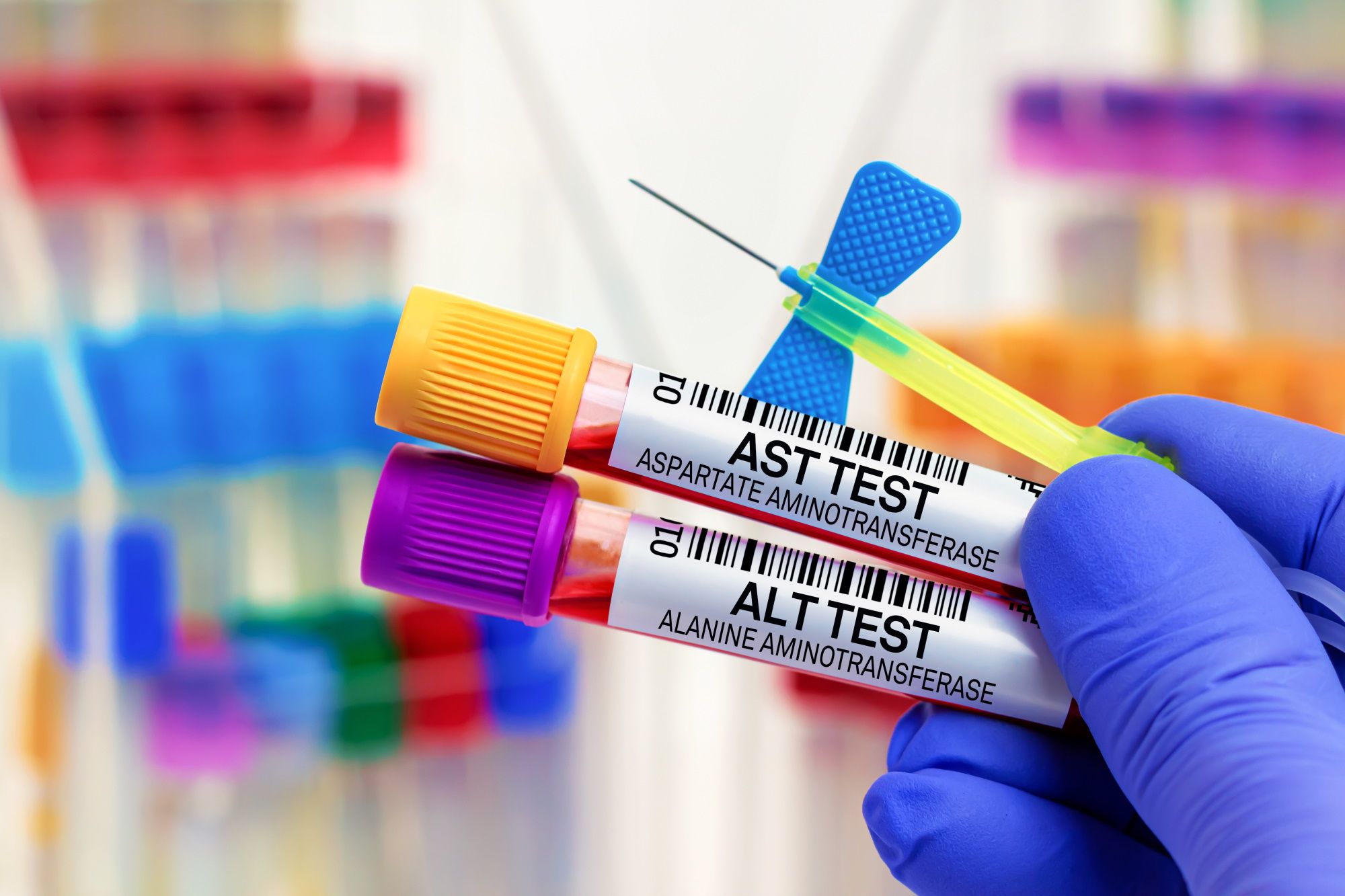
What can cause low AST and ALT levels? Some potential factors include:
- Vitamin B6 deficiency
- Severe kidney disease
- Pregnancy
- Certain medications
In most cases, low AST and ALT levels do not require immediate medical attention. However, if you consistently have low levels and experience other symptoms, it’s advisable to consult your healthcare provider for a thorough evaluation.
How Are AST and ALT Tests Performed?
AST and ALT tests are typically part of a comprehensive metabolic panel or liver function test. These tests require a blood sample, which is usually drawn from a vein in your arm. The procedure is straightforward and generally involves the following steps:
- A healthcare professional will clean the area where the blood will be drawn, usually the inside of your elbow or the back of your hand.
- An elastic band is placed around your upper arm to make the vein more visible and easier to access.
- A needle is gently inserted into the vein to collect the blood sample.
- The blood is collected in a vial or tube.
- The needle is removed, and pressure is applied to the site to stop any bleeding.
- The sample is then sent to a laboratory for analysis.
The entire process usually takes just a few minutes, and you can typically resume your normal activities immediately after the test. Results are usually available within a few days, depending on the laboratory and your healthcare provider’s procedures.
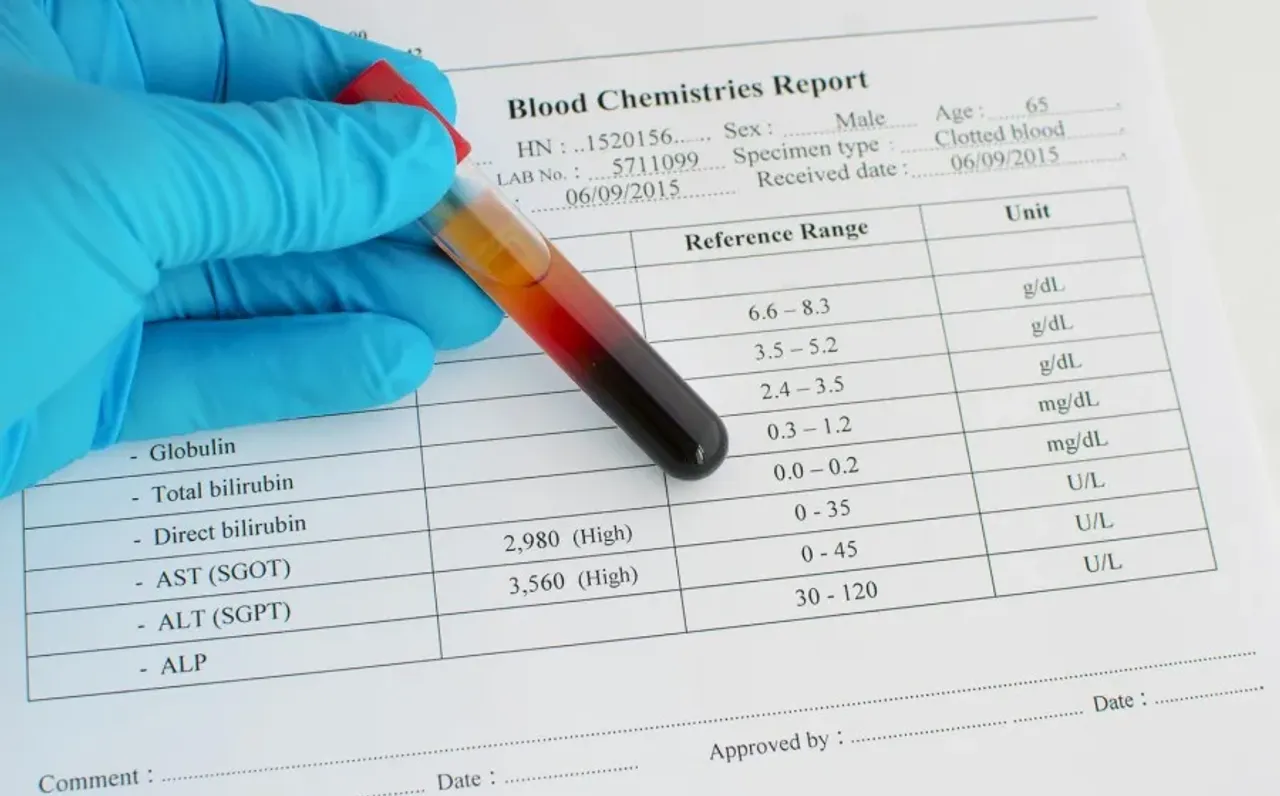
Interpreting AST and ALT Results: When to Seek Medical Attention
Understanding your AST and ALT test results is crucial for maintaining good liver health. While minor fluctuations in these enzyme levels are normal, significant or persistent elevations may require medical attention.
At what point should you be concerned about your AST and ALT levels? Here are some general guidelines:
- Mild elevation (less than 2-3 times the upper limit of normal): This may warrant monitoring and lifestyle changes but doesn’t always indicate serious liver disease.
- Moderate elevation (3-10 times the upper limit of normal): This often suggests active liver disease and requires further evaluation.
- Severe elevation (more than 10 times the upper limit of normal): This is typically associated with acute liver injury and requires immediate medical attention.
It’s important to remember that AST and ALT levels should always be interpreted in the context of your overall health, medical history, and other test results. Your healthcare provider is best equipped to interpret your results and recommend appropriate next steps.

When to Contact Your Doctor
You should contact your healthcare provider if:
- Your AST or ALT levels are consistently elevated, even if only mildly.
- You experience symptoms of liver disease, such as jaundice, abdominal pain, or unexplained fatigue.
- You have risk factors for liver disease, such as heavy alcohol use, obesity, or a family history of liver problems.
- Your AST/ALT ratio is consistently above 2, which may indicate alcoholic liver disease or advanced liver damage.
Early detection and management of liver problems can significantly improve outcomes, so it’s essential to stay proactive about your liver health.
Managing Elevated AST and ALT Levels: Lifestyle Changes and Treatment Options
If you have elevated AST and ALT levels, your healthcare provider may recommend various strategies to improve your liver health and address the underlying cause. The specific approach will depend on the severity of the elevation and the suspected cause.
What steps can you take to lower elevated AST and ALT levels? Here are some common recommendations:

- Limit alcohol consumption: If you drink alcohol, reduce your intake or consider abstaining completely, especially if alcohol-related liver disease is suspected.
- Maintain a healthy weight: Obesity can contribute to non-alcoholic fatty liver disease. Losing excess weight through a balanced diet and regular exercise can help improve liver function.
- Eat a liver-friendly diet: Focus on a diet rich in fruits, vegetables, whole grains, and lean proteins. Limit processed foods, saturated fats, and added sugars.
- Stay hydrated: Drinking plenty of water helps support liver function and overall health.
- Avoid hepatotoxic substances: Be cautious with medications and supplements that can stress the liver. Always follow dosage instructions and consult your healthcare provider about potential interactions.
- Manage underlying conditions: If you have conditions like diabetes or high cholesterol, proper management can help reduce stress on your liver.
- Consider hepatitis vaccination: If you haven’t been vaccinated against hepatitis A and B, discuss this option with your healthcare provider.
In some cases, medication or more intensive treatments may be necessary to address the underlying cause of elevated AST and ALT levels. Your healthcare provider will work with you to develop an appropriate treatment plan based on your specific situation.

Monitoring and Follow-up
Regular monitoring of AST and ALT levels is often recommended for individuals with known liver conditions or those at risk. The frequency of testing will depend on your specific circumstances and the severity of the elevation. Your healthcare provider may also recommend additional tests, such as imaging studies or liver biopsy, to further evaluate liver health and function.
By working closely with your healthcare team and following recommended lifestyle changes and treatments, you can often improve your liver health and reduce AST and ALT levels over time.
The Future of Liver Health Assessment: Beyond AST and ALT
While AST and ALT remain valuable tools for assessing liver health, research is ongoing to develop more precise and comprehensive methods of evaluating liver function and detecting liver disease at earlier stages.
What new approaches are being explored for liver health assessment? Some promising areas include:
- Advanced imaging techniques: Non-invasive imaging methods like transient elastography (FibroScan) and magnetic resonance elastography (MRE) can provide detailed information about liver structure and function.
- Biomarker panels: Researchers are investigating combinations of blood-based biomarkers that may offer more accurate and specific insights into liver health.
- Genetic testing: Identifying genetic variants associated with liver disease risk can help guide personalized prevention and treatment strategies.
- Artificial intelligence: Machine learning algorithms are being developed to analyze complex patterns in liver test results and imaging data, potentially improving diagnostic accuracy.
As these new technologies and approaches continue to evolve, they may complement or even replace traditional liver enzyme tests in some contexts. However, AST and ALT tests are likely to remain important tools in liver health assessment for the foreseeable future due to their simplicity, cost-effectiveness, and well-established clinical utility.

Staying informed about advances in liver health assessment can help you make informed decisions about your healthcare and work more effectively with your medical team to maintain optimal liver function.
Aspartate aminotransferase (AST) blood test
Definition
The aspartate aminotransferase (AST) blood test measures the level of the enzyme AST in the blood.
Alternative Names
Aspartate aminotransferase; Serum glutamic-oxaloacetic transaminase; SGOT
How the Test is Performed
A blood sample is needed.
How to Prepare for the Test
No special preparation is needed.
How the Test will Feel
When the needle is inserted to draw blood, some people feel moderate pain. Others feel only a prick or stinging. Afterward, there may be some throbbing or a slight bruise. This soon goes away.
Why the Test is Performed
AST is an enzyme found in high levels in the liver, heart, and muscles. It is also found in lesser amounts in other tissues. An enzyme is a protein that causes a specific chemical change in the body.
An enzyme is a protein that causes a specific chemical change in the body.
Injury to the liver results in release of AST into the blood.
This test is mainly done along with other tests (such as ALT, ALP, and bilirubin) to diagnose and monitor liver disease.
Normal Results
The normal range is 8 to 33 U/L.
Normal value ranges may vary slightly among different laboratories. Some labs use different measurements or may test different samples. Talk to your health care provider about the meaning of your specific test results.
What Abnormal Results Mean
An increased AST level is often a sign of liver disease. Liver disease is even more likely when the levels of substances checked by other liver blood tests have also increased.
An increased AST level may be due to any of the following:
- Scarring of the liver (cirrhosis)
- Death of liver tissue
- Heart attack
- Too much iron in the body (hemochromatosis)
- Swollen and inflamed liver (hepatitis)
- Lack of blood flow to the liver (liver ischemia)
- Liver cancer or tumor
- Use of drugs that are toxic to the liver, especially alcohol use
- Mononucleosis (“mono”)
- Muscle disease or trauma
- Swollen and inflamed pancreas (pancreatitis)
AST level may also increase after:
- Burns (deep)
- Heart procedures
- Seizure
- Surgery
Pregnancy and exercise may also cause an increased AST level.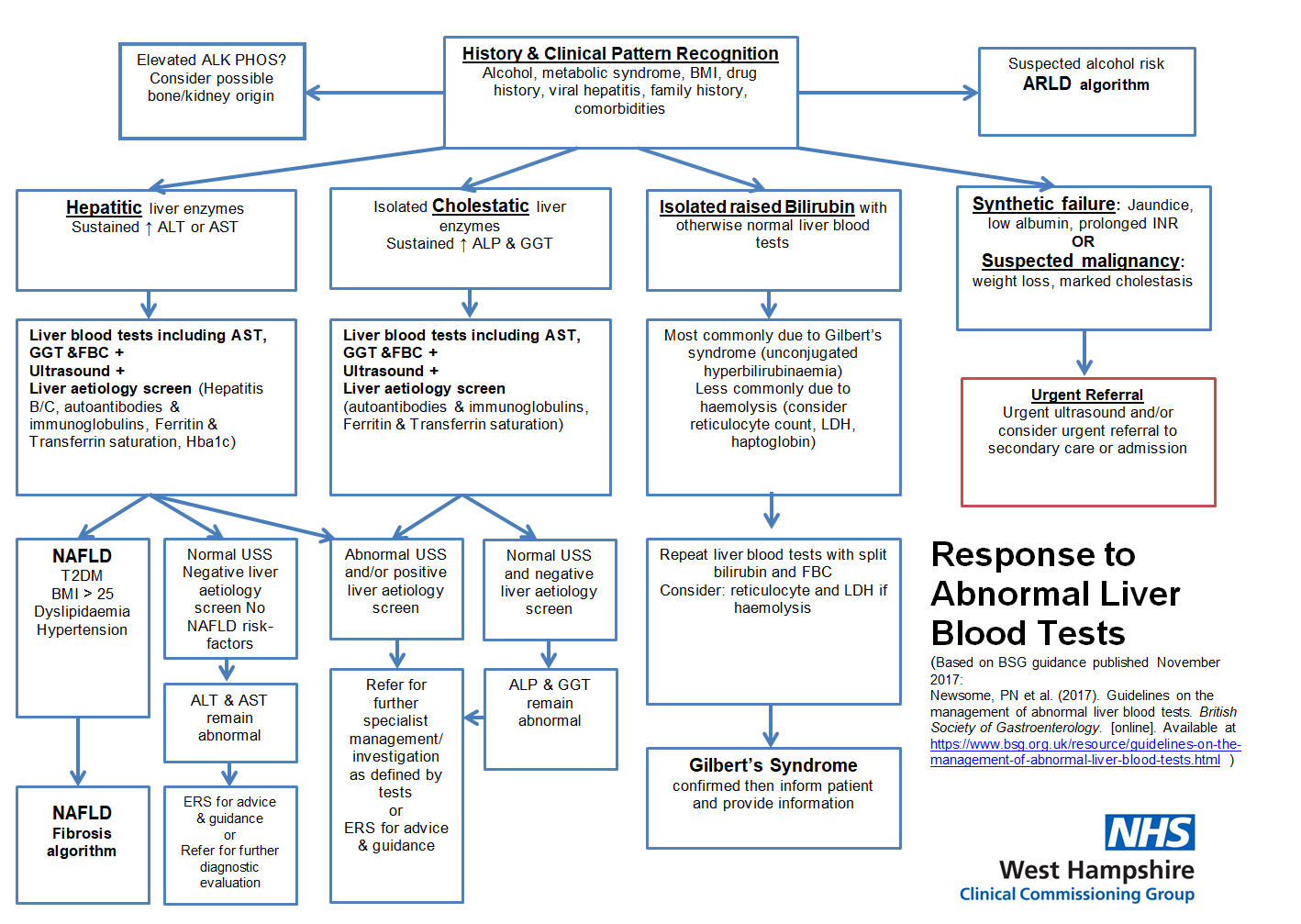
Risks
There is little risk involved with having your blood taken. Veins vary in size from one person to another and from one side of the body to the other. Taking blood from some people may be more difficult than from others.
Risks associated with having blood drawn are slight, but may include:
- Fainting or feeling lightheaded
- Excessive bleeding
- Multiple punctures to locate veins
- Hematoma (blood collecting under the skin)
- Infection (a slight risk any time the skin is broken)
Images
References
Chernecky CC, Berger BJ. Aspartate aminotransferase (AST, aspartate transaminase, SGOT) – serum. In: Chernecky CC, Berger BJ, eds. Laboratory Tests and Diagnostic Procedures. 6th ed. St Louis, MO: Elsevier Saunders; 2013:172-173.
Daniels L, Khalili M, Goldstein E, Bluth MH, Bowne WB, Pincus MR. Evaluation of liver function. In: McPherson RA, Pincus MR, eds. Henry’s Clinical Diagnosis and Management by Laboratory Methods. 24th ed. Philadelphia, PA: Elsevier; 2022:chap 22.
Evaluation of liver function. In: McPherson RA, Pincus MR, eds. Henry’s Clinical Diagnosis and Management by Laboratory Methods. 24th ed. Philadelphia, PA: Elsevier; 2022:chap 22.
Pratt DS. Liver chemistry and function tests. In: Feldman M, Friedman LS, Brandt LJ, eds. Sleisenger and Fordtran’s Gastrointestinal and Liver Disease: Pathophysiology/Diagnosis/Management. 11th ed. Philadelphia, PA: Elsevier; 2021:chap 73.
Last reviewed January 24, 2021 by David C. Dugdale, III, MD, Professor of Medicine, Division of General Medicine, Department of Medicine, University of Washington School of Medicine, Seattle, WA. Also reviewed by David Zieve, MD, MHA, Medical Director, Brenda Conaway, Editorial Director, and the A.D.A.M. Editorial team..
Related specialties
5-year-old boy • behavioral issues • elevated ALT and AST levels • Dx?
Case Reports
By
Author and Disclosure Information
► Behavioral issues (impulsiveness, aggression)
► Liver edge 1 cm below costal margin
► Elevated ALT and AST levels
References
1.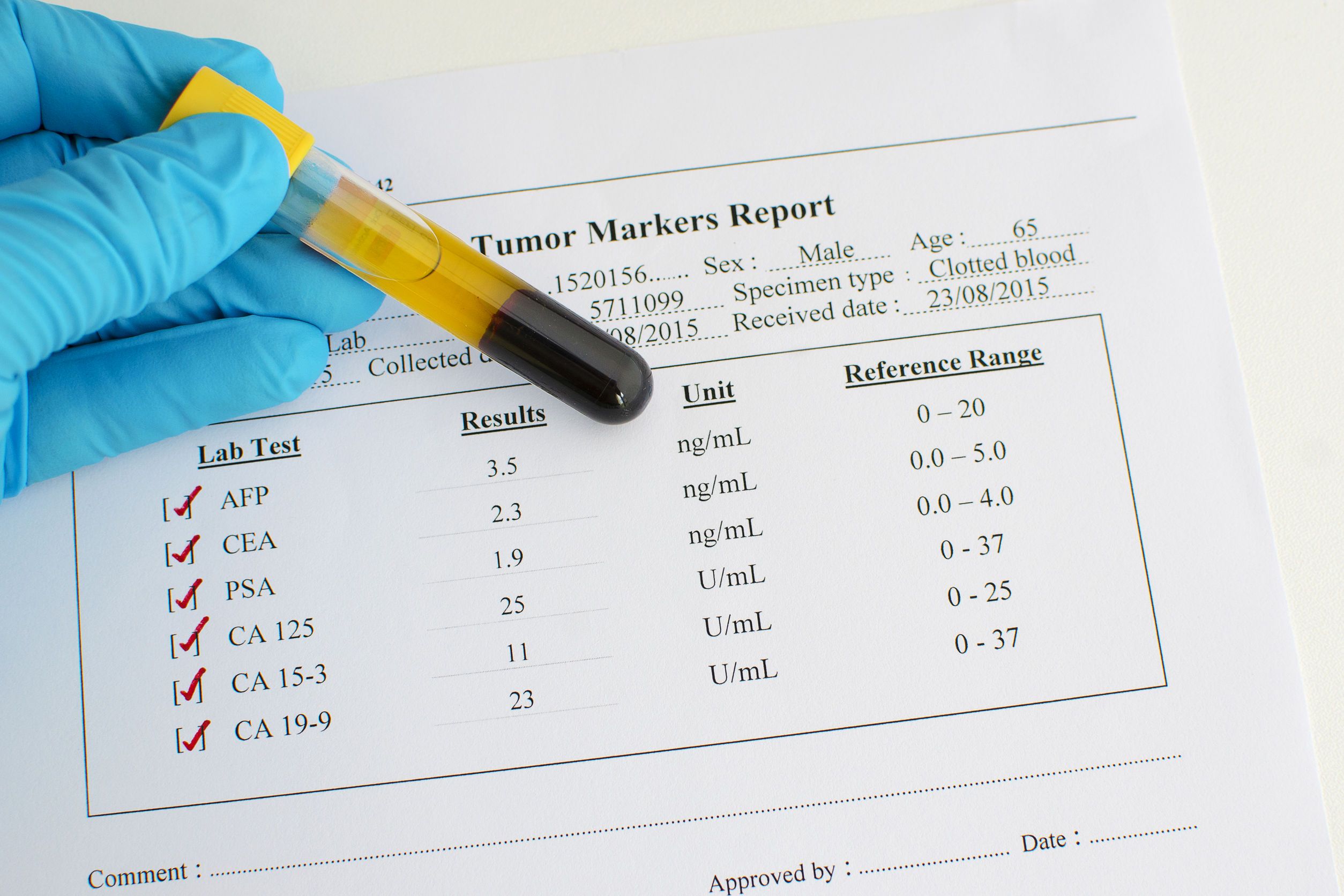 Wu F, Wang J, Pu C, et al. Wilson’s disease: a comprehensive review of the molecular mechanisms. Int J Mol Sci. 2015;16:6419-6431.
Wu F, Wang J, Pu C, et al. Wilson’s disease: a comprehensive review of the molecular mechanisms. Int J Mol Sci. 2015;16:6419-6431.
2. Merle U, Stremmel W, Gessner R. Influence of homozygosity for methionine at codon 129 of the human prion gene on the onset of neurological and hepatic symptoms in Wilson disease. Arch Neurol. 2006;63:982-985.
3. Compston A. Progressive lenticular degeneration: a familial nervous disease associated with cirrhosis of the liver, by S. A. Kinnier Wilson, (From the National Hospital, and the Laboratory of the National Hospital, Queen Square, London) Brain 1912: 34; 295-509. Brain. 2009;132(pt 8):1997-2001.
4. Thomas R, Sanders S, Doust J, et al. Prevalence of attention-deficit/hyperactivity disorder: a systematic review and meta-analysis. Pediatrics. 2015;135:e994-e1001.
5. Kang K. Abnormality on liver function test. Pediatr Gastroenterol Hepatol Nutr. 2013;16:225-232.
6. Lorincz M. Neurologic Wilson’s disease.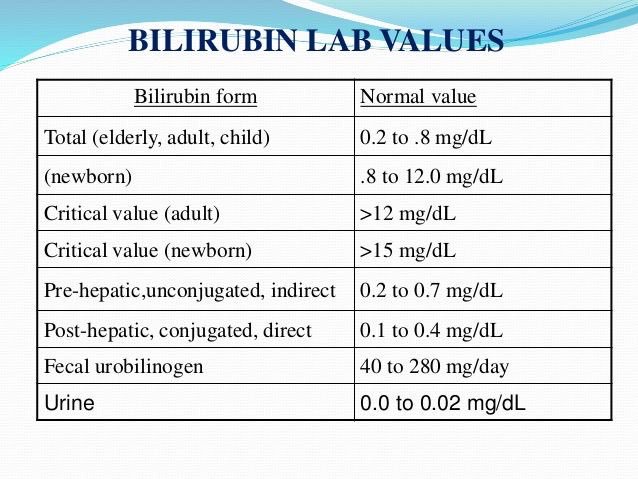 Ann NY Acad Sci. 2010;1184:173-187.
Ann NY Acad Sci. 2010;1184:173-187.
7. Dening TR, Berrios GE, Walshe JM. Wilson’s disease and epilepsy. Brain. 1988;111(pt 5):1139-1155.
8. Socha P, Janczyk W, Dhawan A, et al. Wilson’s disease in children: a position paper by the Hepatology Committee of the European Society for Paediatric Gastroenterology, Hepatology and Nutrition. J Pediatr Gastroenterol Nutrit. 2018;66:334-344.
9. Bull PC, Thomas GR, Rommens JM, et al. The Wilson disease gene is a putative copper transporting P-type ATPase similar to the Menkes gene. Nat Genet. 1993;5:327-337.
10. Ala A, Schilsky ML. Wilson disease: pathophysiology, diagnosis, treatment and screening. Clin Liver Dis. 2004;8:787-805, viii.
11. Thomas GR, Forbes JR, Roberts EA, et al. The Wilson disease gene: spectrum of mutations and their consequences. Nat Genet. 1995;9:210-217.
12. Pfeiffer RF. Wilson’s disease. Semin Neurol. 2007;27:123-132.
13. Das SK, Ray K. Wilson’s disease: an update. Nat Clin Pract Neurol. 2006;2:482-493.
Wilson’s disease: an update. Nat Clin Pract Neurol. 2006;2:482-493.
14. Morgan HG, Stewart WK, Lowe KG, et al. Wilson’s disease and the Fanconi syndrome. Q J Med. 1962;31:361-384.
15. Wiebers DO, Hollenhorst RW, Goldstein NP. The ophthalmologic manifestations of Wilson’s disease. Mayo Clin Proc. 1977;52:409-416.
16. Jackson GH, Meyer A, Lippmann S. Wilson’s disease: psychiatric manifestations may be the clinical presentation. Postgrad Med. 1994;95:135-138.
17. O’Conner JA, Sokol RJ. Copper metabolism and copper storage disorders. In: Suchy FJ, Sokol RJ, Balistreri WF, eds. Liver Disease in Children. 3rd ed. New York, NY: Cambridge University Press; 2007:626-660.
18. Dening TR, Berrios GE. Wilson’s disease: a longitudinal study of psychiatric symptoms. Biol Psychiatry. 1990;28:255-265.
THE CASE
A 5-year-old boy was brought into his primary care clinic by his mother, who expressed concern about her son’s increasing impulsiveness, aggression, and difficulty staying on task at preschool and at home. The child’s medical history was unremarkable, and he was taking no medications. The family history was negative for hepatic or metabolic disease and positive for attention deficit-hyperactivity disorder (ADHD; father).
The child’s medical history was unremarkable, and he was taking no medications. The family history was negative for hepatic or metabolic disease and positive for attention deficit-hyperactivity disorder (ADHD; father).
The child’s growth was normal. His physical exam was remarkable for a liver edge 1 cm below his costal margin. No Kayser-Fleischer rings were present.
Screening included a complete metabolic panel. Notable results included an alanine aminotransferase (ALT) level of 208 U/dL (normal range, < 30 U/dL), an aspartate transaminase (AST) level of 125 U/dL (normal range, 10-34 U/dL), and an alkaline phosphatase (ALP) of 470 U/dL (normal range, 93-309 U/dL). Subsequent repeat laboratory testing confirmed these elevations (ALT, 248 U/dL; AST, 137 U/dL; ALP, 462 U/dL). Ceruloplasmin levels were low (11 mg/dL; normal range, 18-35 mg/dL), and 24-hour urinary copper was not obtainable. Prothrombin/partial thromboplastin time, ammonia, lactate, total and direct bilirubin, and gamma-glutamyltransferase levels were normal.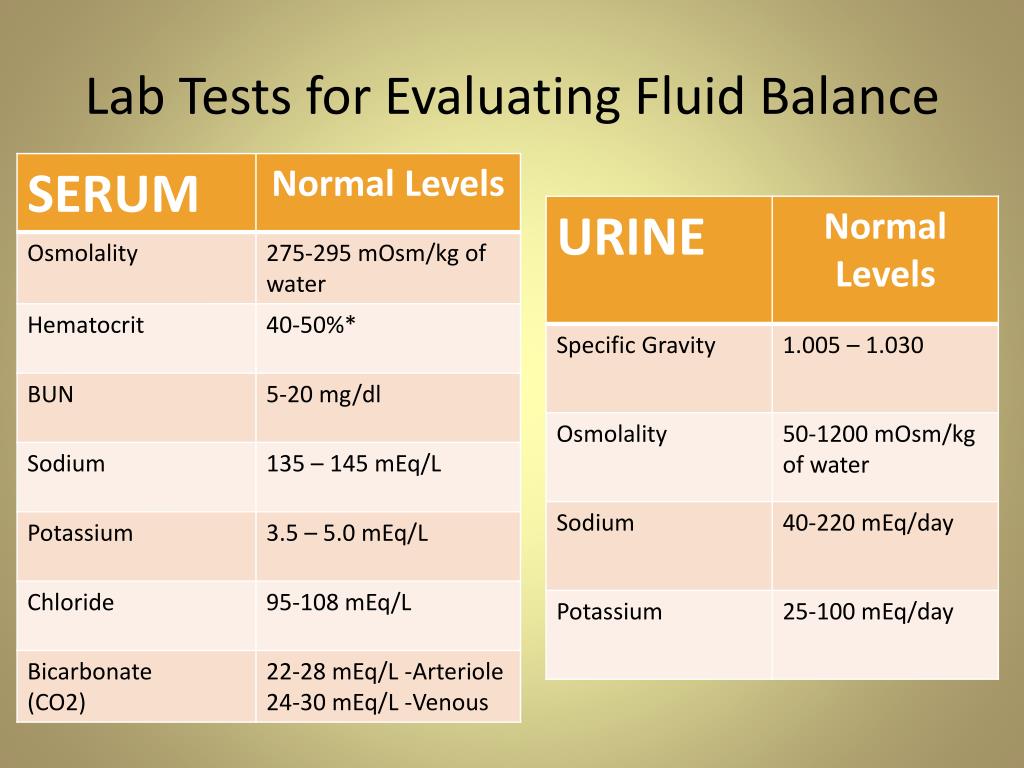
Further evaluation included abdominal ultrasound and brain magnetic resonance imaging, both of which yielded normal results. Testing for Epstein-Barr virus; cytomegalovirus; hepatitis A, B, and C titers; and antinuclear, anti-smooth muscle, and anti–liver-kidney microsomal antibodies was negative.
THE DIAGNOSIS
The patient’s low ceruloplasmin prompted referral to Pediatric Gastroenterology for consultation and liver biopsy due to concern for Wilson disease. Biopsy results were consistent with, and quantitative liver copper confirmatory for, this diagnosis (FIGURE).
Genetic testing for mutations in the ATP7B gene was performed on the patient, his mother, and his siblings (his father was unavailable). The patient, his mother, and his sister were all positive for His1069Gln mutation; only the patient was positive for a 3990_3993 del mutation (his half-brother was negative for both mutations). The presence of 2 different mutant alleles for the ATP7B gene, one on each chromosome—the common substitution mutation, His1069Gln, in exon 14 and a 3990_3993 del TTAT mutation in exon 19—qualified the patient as a compound heterozygote.
The 3990_3993 del TTAT mutation—which to our knowledge has not been previously reported—produced a translational frame shift and premature stop codon. As others have pointed out, frame shift and missense mutations produce a more severe phenotype.1
Continue to: Further testing was prompted…
Pages
- 1
- 2
- 3
- 4
- last »
1. Wu F, Wang J, Pu C, et al. Wilson’s disease: a comprehensive review of the molecular mechanisms. Int J Mol Sci. 2015;16:6419-6431.
2. Merle U, Stremmel W, Gessner R. Influence of homozygosity for methionine at codon 129 of the human prion gene on the onset of neurological and hepatic symptoms in Wilson disease. Arch Neurol. 2006;63:982-985.
3. Compston A. Progressive lenticular degeneration: a familial nervous disease associated with cirrhosis of the liver, by S. A. Kinnier Wilson, (From the National Hospital, and the Laboratory of the National Hospital, Queen Square, London) Brain 1912: 34; 295-509. Brain. 2009;132(pt 8):1997-2001.
Brain. 2009;132(pt 8):1997-2001.
4. Thomas R, Sanders S, Doust J, et al. Prevalence of attention-deficit/hyperactivity disorder: a systematic review and meta-analysis. Pediatrics. 2015;135:e994-e1001.
5. Kang K. Abnormality on liver function test. Pediatr Gastroenterol Hepatol Nutr. 2013;16:225-232.
6. Lorincz M. Neurologic Wilson’s disease. Ann NY Acad Sci. 2010;1184:173-187.
7. Dening TR, Berrios GE, Walshe JM. Wilson’s disease and epilepsy. Brain. 1988;111(pt 5):1139-1155.
8. Socha P, Janczyk W, Dhawan A, et al. Wilson’s disease in children: a position paper by the Hepatology Committee of the European Society for Paediatric Gastroenterology, Hepatology and Nutrition. J Pediatr Gastroenterol Nutrit. 2018;66:334-344.
9. Bull PC, Thomas GR, Rommens JM, et al. The Wilson disease gene is a putative copper transporting P-type ATPase similar to the Menkes gene. Nat Genet. 1993;5:327-337.
10. Ala A, Schilsky ML.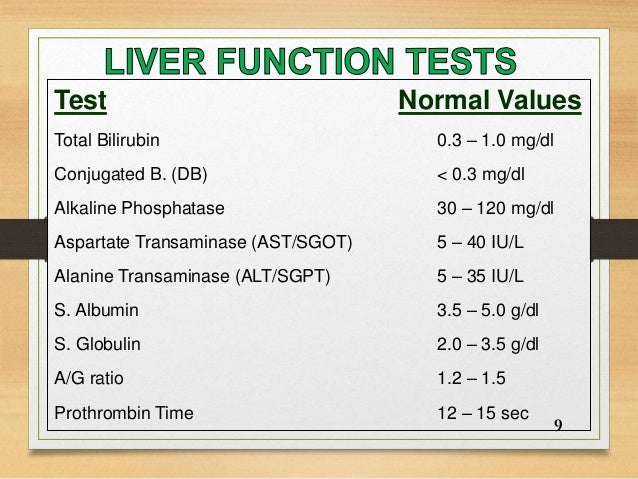 Wilson disease: pathophysiology, diagnosis, treatment and screening. Clin Liver Dis. 2004;8:787-805, viii.
Wilson disease: pathophysiology, diagnosis, treatment and screening. Clin Liver Dis. 2004;8:787-805, viii.
11. Thomas GR, Forbes JR, Roberts EA, et al. The Wilson disease gene: spectrum of mutations and their consequences. Nat Genet. 1995;9:210-217.
12. Pfeiffer RF. Wilson’s disease. Semin Neurol. 2007;27:123-132.
13. Das SK, Ray K. Wilson’s disease: an update. Nat Clin Pract Neurol. 2006;2:482-493.
14. Morgan HG, Stewart WK, Lowe KG, et al. Wilson’s disease and the Fanconi syndrome. Q J Med. 1962;31:361-384.
15. Wiebers DO, Hollenhorst RW, Goldstein NP. The ophthalmologic manifestations of Wilson’s disease. Mayo Clin Proc. 1977;52:409-416.
16. Jackson GH, Meyer A, Lippmann S. Wilson’s disease: psychiatric manifestations may be the clinical presentation. Postgrad Med. 1994;95:135-138.
17. O’Conner JA, Sokol RJ. Copper metabolism and copper storage disorders. In: Suchy FJ, Sokol RJ, Balistreri WF, eds. Liver Disease in Children. 3rd ed. New York, NY: Cambridge University Press; 2007:626-660.
Liver Disease in Children. 3rd ed. New York, NY: Cambridge University Press; 2007:626-660.
18. Dening TR, Berrios GE. Wilson’s disease: a longitudinal study of psychiatric symptoms. Biol Psychiatry. 1990;28:255-265.
Recommended Reading
IBD quality initiative slashes ED utilization
MDedge Family Medicine
Marijuana, drug use a mystery in IBD
MDedge Family Medicine
Study implicates gut bacteria in PAH
MDedge Family Medicine
HBV: Rethink the free pass for immune tolerant patients
MDedge Family Medicine
Osteoporosis, fracture risk higher in patients with IBD
MDedge Family Medicine
Older adults with IBD often undertreated
MDedge Family Medicine
Obesity expert: Time to embrace growing array of options
MDedge Family Medicine
Team approach greatly reduces inappropriate PPI use
MDedge Family Medicine
Screen all adults for hepatitis C, says USPSTF
MDedge Family Medicine
Can this patient get IV contrast?
MDedge Family Medicine
- Gastroenterology
ALT (alanine aminotransferase) – SanaTest laboratory
Service code
Article: B093
Result col.
Term, working days*1
Taking biomaterial is paid separately
Taking blood – 100 ₽
Taking a smear – 150 ₽
Rules for preparing for tests
An intracellular enzyme involved in amino acid metabolism.
Functions. Catalyzes the transfer of the amino group of alanine to alpha-ketoglutaric acid with the formation of pyruvic acid and glutamic acid. Transamination occurs in the presence of a coenzyme – pyridoxal phosphate – a derivative of vitamin B6. The highest activity of ALT is detected in the liver and kidneys, the lower one is in the pancreas, heart, and skeletal muscles. Enzyme activity in women is slightly lower than in men.
ALT is an intracellular enzyme and its content in the blood serum of healthy people is low. But when cells rich in ALT (liver, heart muscle, skeletal muscles, kidneys) are damaged or destroyed, these enzymes are released into the bloodstream, which leads to an increase in their activity in the blood. In viral hepatitis, the degree of increase in ALT activity is usually proportional to the severity of the disease. In acute cases, the activity of the enzyme in the blood serum may exceed normal values by 5-10 times or more. With viral hepatitis, an increase in enzyme activity occurs at a very early time – even before the onset of jaundice. Enzyme activity is also increased in patients with the anicteric form of the disease. In dynamics, with a favorable course of the process, ALT activity slowly decreases to its original values over several weeks. But a rapid decrease in enzyme activity, combined with increasing hyperbilirubinemia, indicates an unfavorable prognosis.
In viral hepatitis, the degree of increase in ALT activity is usually proportional to the severity of the disease. In acute cases, the activity of the enzyme in the blood serum may exceed normal values by 5-10 times or more. With viral hepatitis, an increase in enzyme activity occurs at a very early time – even before the onset of jaundice. Enzyme activity is also increased in patients with the anicteric form of the disease. In dynamics, with a favorable course of the process, ALT activity slowly decreases to its original values over several weeks. But a rapid decrease in enzyme activity, combined with increasing hyperbilirubinemia, indicates an unfavorable prognosis.
ALT is also increased in myocardial infarction: the simultaneous determination of the activity of two aminotransferases (ALT and AST) is a valuable diagnostic test. Normally, the ratio of AST/ALT activities (de Ritis coefficient) is 1.33±0.42. With viral hepatitis, this ratio decreases, and with acute myocardial infarction, it rises sharply.
Indications for the purpose of the analysis:
Diagnostics and differential diagnostics of liver diseases; Donor screening; Examination of contacts in the focus of viral hepatitis; Myocardial pathology; Skeletal diseases
Increased ALT level:
Necrosis of liver cells of any etiology (viral hepatitis, toxic liver damage). Shock. Heart failure. Extensive trauma and necrosis of skeletal muscles. Cirrhosis of the liver. Cholestatic and obstructive jaundice. Liver cancer (primary and metastatic). Extensive myocardial infarction. Myocarditis. Myositis. Myodystrophy. fatty hepatosis. Chronic alcoholism. Severe pancreatitis. Severe burns. Primary lack of carnitine. Treatment with hepatotoxic drugs (psychotropic drugs, anabolic steroids, contraceptives, salicylates, sulfonamides, antibiotics, immunosuppressants, antitumor drugs, chemotherapy and anesthesia drugs).
Decreased ALT level:
Severe liver damage – extensive necrosis, cirrhosis (when the number of cells synthesizing ALT is significantly reduced).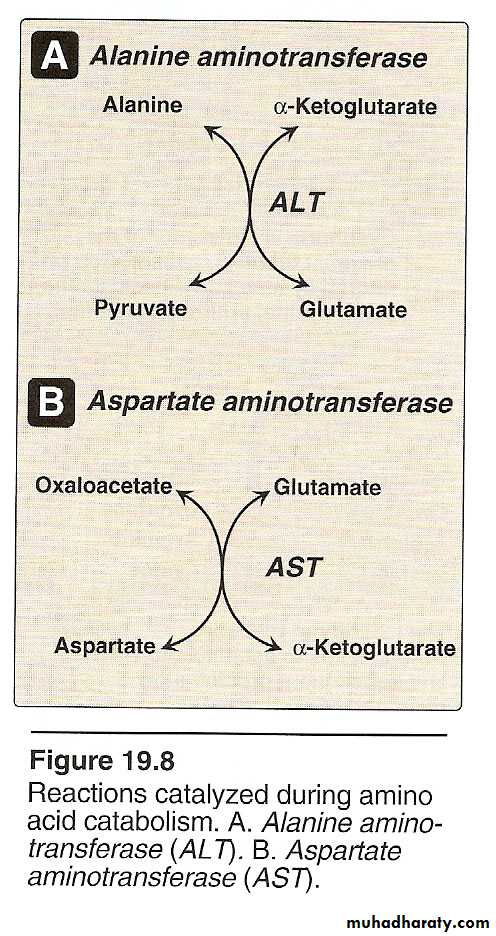 Deficiency of pyridoxal phosphate (vitamin B6)
Deficiency of pyridoxal phosphate (vitamin B6)
Read more…Hide
Service cost
140 ₽
Quantity of goods ALT (alanine aminotransferase) 90 003
Search by category:
Select categoryComplex solutions (21)Coronavirus ( COVID-19) (6) Influenza (1) General clinical blood tests (10) Blood type and Rh factor (6) Biochemical blood tests (52) Blood coagulation system (9) Urine examinations (29) Microscopic examinations (12) Cytological examinations (11) Researches feces (9)Sperm (ejaculate) studies (2)Hormonal studies (30)Reproduction hormones (17)Prenatal diagnostics (8)PRISCA-prenatal screening program (2)Tumor markers (17)Vitamins, electrolytes and microelements (72)Microbiological studies ( cultures) (7) Sexually transmitted infections (PCR diagnostics) (36) Diagnosis of hepatitis (22) Serological markers of infectious diseases (78) Immunological studies (11) Markers of autoimmune diseases (48) Diagnosis of herpes virus (13) Molecular (DNA / RNA ) PCR diagnostics (blood) (10) Allergology (462) Antibodies to parasites (12) DNA / RNA tick diagnostics by PCR (2) Histological studies (2) Genetic studies (55) Chemical and toxicological studies (9Services
Result: no.
Term, working days*: 4
1,200 ₽
Add to cart
Material: siv.
Result: no.
Term, working days*: 4
The specified period does not include the day of taking the biomaterial.
1,200 RUB
Add to cart
Article: B095
Article: B095
days*: 1
Result: no.
Add to cart
days*: 1
Result: no.
The specified period does not include the day of taking the biomaterial.
140 ₽
Add to cart days*: 1
Result: no.
Add to cart
days*: 1
Result: no.
The specified period does not include the day of taking the biomaterial.
140 ₽
Add to cart functions of internal organs (liver, kidneys , thyroid gland). Diagnosis is based on methods for detecting the level of sugar, cholesterol, electrolyte indicators (potassium, sodium, chloride). Also, blood biochemistry includes tests to clarify the hormonal balance, the presence of narcotic substances in the body (chemical and toxicological studies).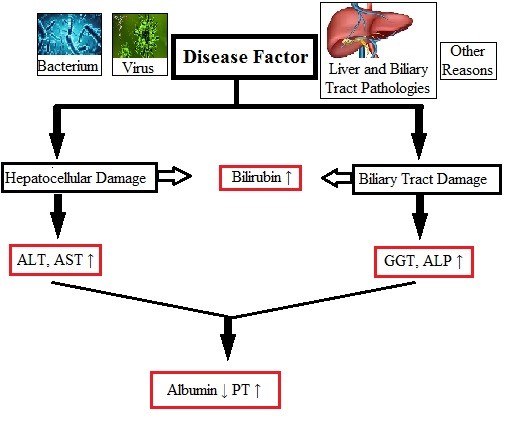
Blood chemistry: liver profile and kidney test
Liver function can be measured by looking at the levels of enzymes AST , ALT , ALP , and body. High levels indicate that unwanted changes are taking place in the body. The data obtained may show various diseases :
- viral hepatitis or infections;
- a tumor developing in the body;
- diabetes mellitus, pre-diabetic changes;
- degradation of internal organs due to alcoholism.
Before taking a blood test for biochemistry, specify the specifics of preparation for the analysis. Some laboratory tests require certain conditions to be met (no food 12 hours before the test).
Liver tests allow you to clarify the specifics of the work of the kidneys. This includes tests such as a serum creatinine and urea test. The laboratory assistant measures the concentration of these substances in serum or plasma.
Other studies include the study of potassium, sodium. High levels of uric acid, for example, can cause gout (an inflammatory disease of the joints). Before such screening, you can eat and drink normally.
What information does general blood chemistry provide?
As part of biochemical analyzes, you can find out about the state of many organs and systems. For example, thyroid function tests in an adult measure TSH (thyroid-stimulating hormone) and T4 (free thyroxine). Thanks to this, it is possible to get an idea of \u200b\u200bthe endocrine system and metabolism. The measurement of enzymes in general blood biochemistry also provides a lot of information :
- Creatine kinase – Elevated levels of this enzyme can be caused by excessive exercise, muscle damage, and viral infections. In addition, this indicator alone can already signal a myocardial infarction that has occurred.

- Troponins are also elevated after a heart attack.
What other information does the general blood test give biochemistry and what diseases can it report? The test may indicate diabetes. The amount of sugar in the blood is controlled by insulin, a hormone produced by the pancreas. The level of sugar (glucose) can be measured after a 12-hour fast or after a meal. The decoding of the analyzes is carried out according to a special table with the designation of the obtained indicators and the existing norm.
In addition to the listed options, you can donate blood for biochemistry to measure the level of cholesterol and triglycerides. A high level of LDL is associated with heart disease, blockage of blood vessels. The concentration of a drug in the body can be measured. This is usually used to check the effects of heart and anticonvulsant drugs, COPD and asthma treatments. Screening is useful in identifying the causes of infertility, problems with the menstrual cycle, and menopause.

 Other studies include the study of potassium, sodium. High levels of uric acid, for example, can cause gout (an inflammatory disease of the joints). Before such screening, you can eat and drink normally.
Other studies include the study of potassium, sodium. High levels of uric acid, for example, can cause gout (an inflammatory disease of the joints). Before such screening, you can eat and drink normally.
